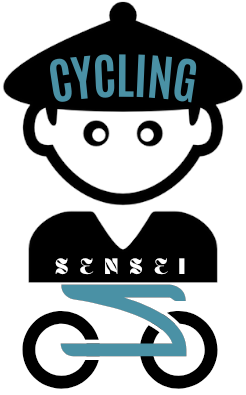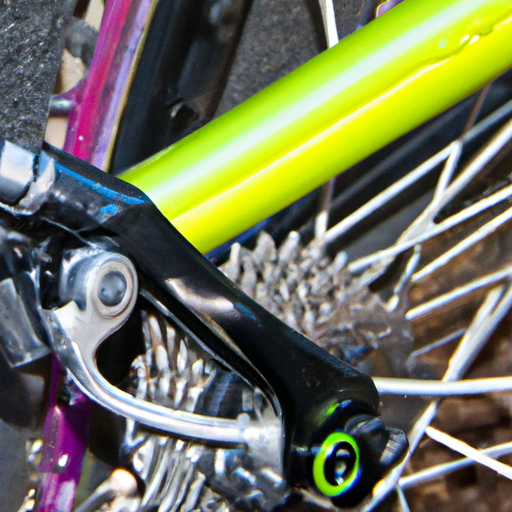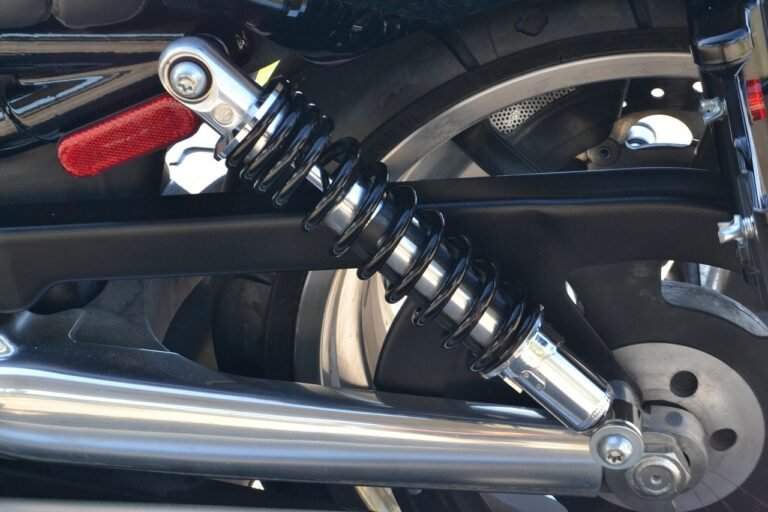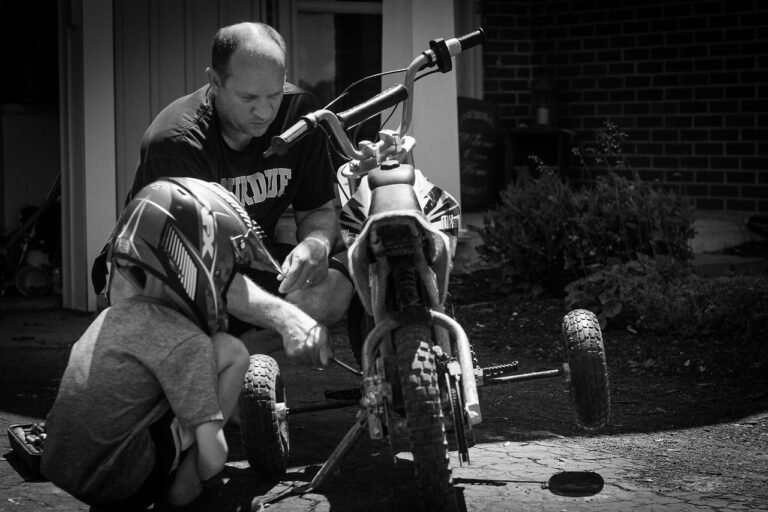How Do I Choose The Right Tire Pressure For My Bike?
So you’ve got yourself a shiny new bike, but you’re not quite sure how to set the ideal tire pressure. Don’t worry, we’ve got you covered! Finding the right tire pressure is crucial for a smooth and efficient ride, as it affects both performance and comfort. In this article, we’ll guide you through the factors to consider in order to choose the perfect tire pressure for your bike, ensuring an enjoyable ride every time.
Factors to Consider
When it comes to choosing the right tire pressure for your bike, there are several important factors that you should take into consideration. These factors include weight, riding conditions, tire width, and rider preference. By understanding the impact of each of these factors on tire pressure, you can ensure that you have the optimal pressure for your bike.
Weight
The weight of both the rider and the bike plays a crucial role in determining the appropriate tire pressure. Heavier riders may require higher tire pressures to support their weight and prevent pinch flats, while lighter riders can typically get away with lower pressures. It’s important to find the right balance that provides adequate support without sacrificing comfort or performance.
Riding Conditions
The conditions in which you ride your bike also influence the ideal tire pressure. If you primarily ride on smooth and paved roads, you may opt for higher pressures to reduce rolling resistance and increase efficiency. On the other hand, if you frequently encounter rough or uneven surfaces, lower pressures can improve traction and provide a smoother ride.
Tire Width
The width of your bike tires affects the recommended tire pressure range. Generally, wider tires require lower pressures to provide better contact with the ground and enhanced stability. Narrower tires, on the other hand, usually require higher pressures for optimal performance. Be sure to check the manufacturer’s guidelines for your specific tire width to get an accurate recommendation.
Rider Preference
Lastly, rider preference can also play a role in determining the ideal tire pressure. Some riders may prefer a firmer ride with higher pressures, while others may prioritize comfort and opt for lower pressures. It’s important to find a pressure that suits your riding style and personal preference, as this can greatly affect your overall riding experience.
Recommended Tire Pressure Range
Now that you’re aware of the various factors to consider, let’s look at how to determine the recommended tire pressure range for your bike. There are multiple ways to arrive at the optimal pressure, including manufacturer’s guidelines, weight-based recommendations, and trial and error.
Manufacturer’s Guidelines
The manufacturer of your bike or tires typically provides guidelines for the recommended tire pressure range. These guidelines are often based on extensive testing and research, taking into account factors such as tire width and maximum load. You can usually find this information on the manufacturer’s website or in the user manual. It’s always a good idea to start with the recommended range provided by the manufacturer as a baseline.
Weight-Based Recommendations
As mentioned earlier, weight plays a significant role in determining tire pressure. Some tire manufacturers provide weight-based recommendations, which can be helpful in ensuring proper support and preventing flats. These recommendations often include a chart or table that correlates weight ranges with corresponding tire pressures. By matching your weight to the appropriate pressure, you can fine-tune your tire performance.
Trial and Error
Another approach to finding the right tire pressure is through trial and error. This method involves experimenting with different pressures and evaluating the performance and comfort of your ride. Start with the manufacturer’s recommended range, and then make small adjustments up or down to see how it affects your bike’s handling and your overall riding experience. Keep a record of the pressures you try and the corresponding results to help you narrow down the optimal pressure for your bike.
Effects of Underinflated Tires
Understanding the effects of underinflated tires is essential to grasp the importance of maintaining proper tire pressure. Riding with underinflated tires can result in a range of negative consequences, including increased rolling resistance, decreased traction, a higher risk of pinch flats, and premature tire wear.
Increased Rolling Resistance
When your tires are underinflated, the larger contact patch absorbs more of the surface, causing increased rolling resistance. This can make it more difficult to pedal and decreases your overall biking efficiency. You may find yourself exerting more effort and becoming fatigued more quickly as a result. Proper tire pressure helps reduce rolling resistance and allows you to ride more smoothly and efficiently.
Decreased Traction
Underinflated tires also compromise your bike’s handling and traction. With less pressure, the tire becomes more flexible and may not conform to the ground as effectively. This reduces grip, especially when cornering or navigating uneven surfaces. Insufficient traction can lead to loss of control, making it harder to steer and increasing the risk of accidents. Keeping your tires properly inflated ensures optimal traction and maneuverability.
Higher Risk of Pinch Flats
One of the most common issues associated with underinflated tires is an increased risk of pinch flats, also known as snake bites. Pinch flats occur when the tire compresses against the rim, causing the inner tube to be pinched and punctured. This often happens when riding over rough or sharp obstacles with insufficient tire pressure. By maintaining the proper inflation level, you can minimize the risk of pinch flats and avoid inconvenient and potentially dangerous roadside repairs.
Increased Wear on Tires
Underinflated tires also wear out faster compared to properly inflated ones. The lack of pressure causes the tire sidewalls to flex excessively, putting additional stress on the tire. This can result in sidewall damage, tread wear, and premature tire failure. Regularly monitoring and adjusting tire pressure can help extend the lifespan of your tires, saving you money and providing a safer riding experience.
Effects of Overinflated Tires
While underinflated tires pose various problems, overinflated tires can also have negative effects on your ride. It’s important to understand these effects to avoid the potential dangers associated with riding on overinflated tires.
Decreased Comfort
Overinflated tires tend to have a harsher ride due to diminished shock absorption. With excessive pressure, the tires are unable to effectively absorb vibrations and bumps in the road. This can translate to a less comfortable ride, especially when encountering uneven surfaces or long-distance rides. Maintaining the right pressure ensures a smoother and more enjoyable biking experience.
Reduced Traction on Rough Surfaces
Similar to underinflated tires, overinflated tires can compromise traction. With too much air pressure, the tire becomes less supple and struggles to conform to the irregularities of rough surfaces. This can result in a decrease in grip and stability, making it more difficult to control your bike, especially on unpaved or slippery terrains. Maintaining the proper tire pressure is key to ensuring optimal contact with the ground and maximizing traction.
Increased Risk of Tire Blowout
Overinflated tires are at a higher risk of blowouts, particularly when exposed to external obstacles or sudden impacts. The excess pressure puts more strain on the tire’s structural integrity, making it more susceptible to failure. A blowout can occur suddenly and lead to a loss of control, potentially causing a serious accident. By inflating your tires to the appropriate pressure, you can reduce the risk of blowouts and ride with greater confidence.
Optimal Tire Pressure for Different Types of Biking
The optimal tire pressure can vary depending on the type of biking you engage in. Whether you’re a road cyclist, mountain biker, commuter, or touring enthusiast, understanding the ideal tire pressure for your specific style of riding is crucial for optimal performance and safety.
Road Biking
For road biking, where speed and efficiency are paramount, higher tire pressures are typically recommended. The smooth and paved surfaces allow for reduced rolling resistance, enabling you to maintain higher speeds with less effort. Start with the manufacturer’s guidelines or weight-based recommendations and adjust accordingly based on personal preference. Be cautious not to exceed the maximum tire pressure specified by the manufacturer to prevent potential blowouts.
Mountain Biking
Mountain biking often entails tackling challenging terrains with rough surfaces, obstacles, and various off-road conditions. In this case, lower tire pressures are generally preferred to enhance traction and shock absorption. Lower pressures allow the tires to conform to the uneven surfaces, providing improved grip and stability. Experiment with different pressures to find the right balance between traction, control, and the risk of pinch flats.
Commuting
When commuting, riders have to deal with a range of road surfaces, including asphalt, concrete, and sometimes uneven terrain. In most cases, a mid-range tire pressure is recommended. This offers a balance between rolling resistance and traction, optimizing both efficiency and comfort. Consider the road conditions you encounter most frequently and adjust the tire pressure accordingly for the best commuting experience.
Touring
Touring involves long-distance rides with a combination of road surfaces, often including some unpaved or rougher sections. For touring, a slightly lower tire pressure than what is typically used for road biking is often preferred. This allows for improved shock absorption and enhanced stability, especially when encountering uneven surfaces or gravel roads. Prioritize comfort and control by ensuring that your tire pressure provides the necessary support and grip for extended rides.
Measuring and Adjusting Tire Pressure
To determine and maintain the optimal tire pressure for your bike, it’s important to have a reliable method of measurement and the ability to make adjustments as needed. Here are some methods you can use to measure and adjust the tire pressure effectively.
Using a Pressure Gauge
Investing in a quality pressure gauge is essential for accurate tire pressure measurement. A pressure gauge allows you to precisely monitor and adjust the pressure within the recommended range. There are various types of pressure gauges available, ranging from floor pumps with built-in gauges to handheld digital gauges. Choose one that suits your needs and ensure it is properly calibrated for accurate readings.
Trial and Error
As mentioned earlier, trial and error can be an effective method for finding the optimal tire pressure. Start with the recommended range provided by the manufacturer or weight-based recommendations, and then make small adjustments based on your personal preference and the performance of your bike. Keep track of the pressures you try and pay attention to how they affect your ride. With enough experimentation, you’ll be able to find the pressure that works best for you.
Considerations for Different Conditions
It’s important to note that tire pressure can vary depending on external conditions. For example, colder temperatures can cause the air in your tires to contract, resulting in a decrease in pressure. Similarly, hotter temperatures can cause the air to expand, increasing the pressure. It’s advisable to check and adjust your tire pressure more frequently in extreme temperature conditions to ensure optimal performance and safety.
Factors Affecting Tire Pressure
In addition to the factors mentioned earlier, such as weight and riding conditions, there are other external factors that can affect tire pressure. These factors include temperature, humidity, and altitude, all of which can contribute to fluctuations in tire pressure.
Temperature
Temperature plays a significant role in tire pressure. As the temperature changes, so does the air pressure inside your tires. Colder temperatures cause the air to contract, resulting in lower pressure. On the other hand, hotter temperatures cause the air to expand, leading to higher pressure. It’s crucial to take these temperature fluctuations into account when measuring and adjusting your tire pressure, especially if you’re planning to ride in extreme weather conditions.
Humidity
Humidity can also influence tire pressure, although to a lesser extent compared to temperature. Humid conditions can cause the air inside the tire to retain more moisture, resulting in a slight increase in pressure. While the effect is generally minimal, it’s still important to consider humidity levels, particularly in areas with high humidity, when adjusting your tire pressure.
Altitude
Changes in altitude can affect tire pressure due to lower atmospheric pressure at higher elevations. As you ascend to higher altitudes, the air pressure decreases, and this can cause a decrease in tire pressure. Conversely, descending to lower altitudes results in an increase in atmospheric pressure, leading to higher tire pressure. If you plan on riding at different altitudes, it’s crucial to adjust your tire pressure accordingly to maintain optimal performance and safety.
Maintenance Tips
Proper tire pressure maintenance is essential for optimal bike performance, safety, and longevity. Here are some maintenance tips to help you keep your tire pressure at the right level:
Regular Pressure Checks
Make it a habit to regularly check your tire pressure. Ideally, you should check your tire pressure before each ride. This ensures that your tires are always inflated to the appropriate level and reduces the likelihood of encountering issues associated with underinflated or overinflated tires.
Adjusting for Different Riding Conditions
As mentioned earlier, different riding conditions may require adjustments to your tire pressure. If you know you’ll be encountering rough roads or off-road terrain, consider lowering your tire pressure to improve traction and comfort. Conversely, if you’re embarking on a road biking adventure, you may prefer higher tire pressures to maximize efficiency.
Replacing Damaged Tubes or Tires
Regularly inspect your tires and inner tubes for signs of damage, such as cuts, punctures, or sidewall cracks. If you notice any significant damage, it’s crucial to replace the affected components promptly. Damaged tubes or tires can compromise the integrity of your bike’s tires and increase the risk of flats or blowouts.
Consulting with Professional Mechanics
If you’re unsure about the appropriate tire pressure for your bike or need assistance with maintenance, don’t hesitate to consult with professional bike mechanics. They have the expertise and experience to provide you with tailored advice and ensure that your bike is in optimal condition. They can also assist with more complex tasks, such as tube or tire replacements.
Importance of Proper Tire Pressure
Maintaining proper tire pressure is not just about comfort and performance – it’s also crucial for safety and the longevity of your tires. Here are some key reasons why proper tire pressure is important:
Enhanced Performance
Optimal tire pressure improves the efficiency and performance of your bike. By reducing rolling resistance, your bike will require less effort to maintain speed and cover longer distances. Additionally, adequate tire pressure ensures optimal traction, allowing you to maintain control and maneuverability regardless of the riding conditions.
Improved Safety
Proper tire pressure significantly enhances your safety while riding. It improves traction, reducing the risk of accidents caused by loss of control or skidding. It also minimizes the chance of pinch flats and blowouts, which can be dangerous, particularly at high speeds. By maintaining the right tire pressure, you can ride with greater confidence and minimize the chances of encountering tire-related issues.
Longer Tire Lifespan
Inflating your tires to the appropriate pressure helps extend the lifespan of your tires. Underinflated tires are more prone to damage, wear, and premature failure. Overinflated tires, on the other hand, can wear out faster due to increased stress on the tire structure. By regulating your tire pressure within the recommended range, you can maximize the durability of your tires and save money on frequent replacements.
Conclusion
Choosing the right tire pressure for your bike is crucial for optimal performance, safety, and overall riding experience. Factors such as weight, riding conditions, tire width, and personal preference all play a role in determining the optimal pressure. By considering these factors and following the manufacturer’s guidelines or weight-based recommendations, you can fine-tune your tire pressure to suit your needs.
It’s important to be aware of the effects of underinflated and overinflated tires, as well as the optimal pressure for different types of biking. Regular pressure checks, adjustments, and proper maintenance are essential for ensuring optimal tire pressure. By doing so, you can enhance your bike’s performance, improve safety, and enjoy a longer lifespan for your tires.
Remember, if you’re unsure about the ideal tire pressure or need assistance, don’t hesitate to reach out to professional bike mechanics. They can provide expert advice and help you maintain your bike in top condition. So, next time you hit the road or trail, make sure your tires are properly inflated for a smoother, safer, and more enjoyable ride.



